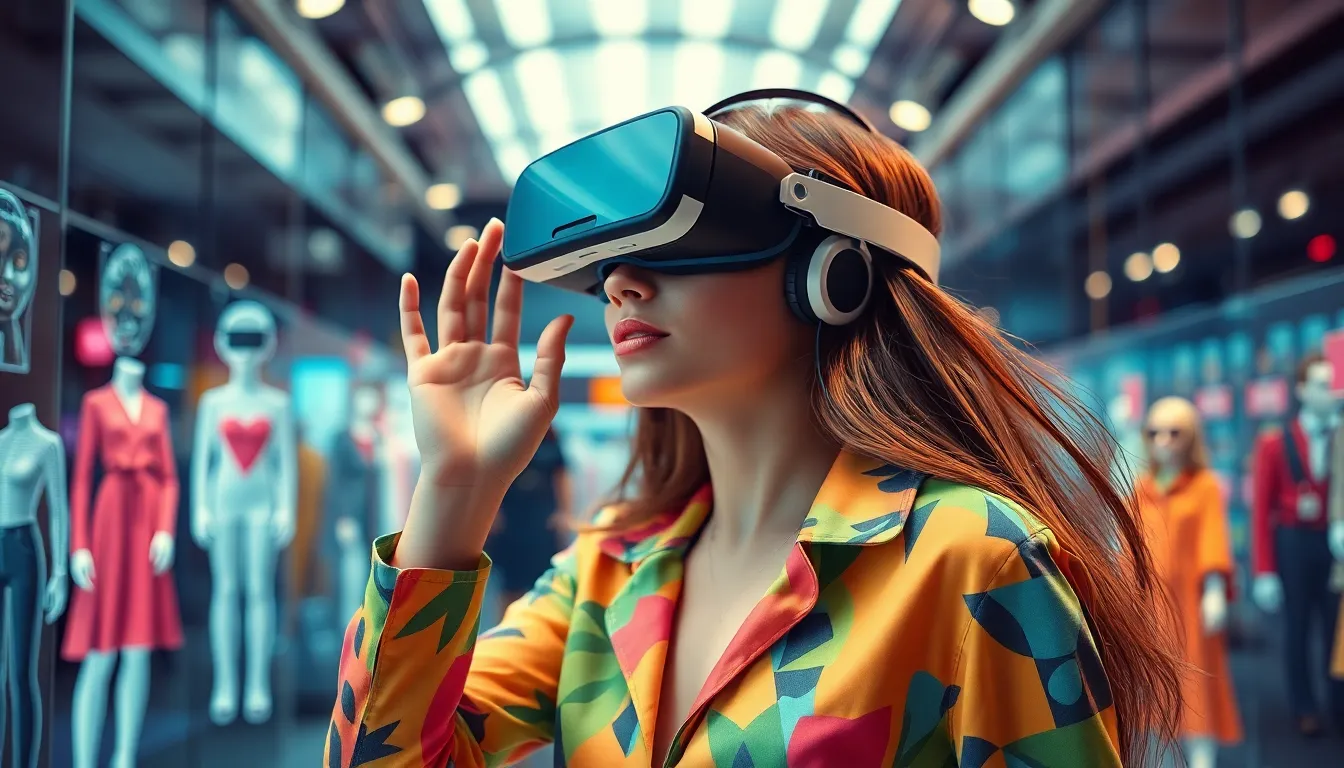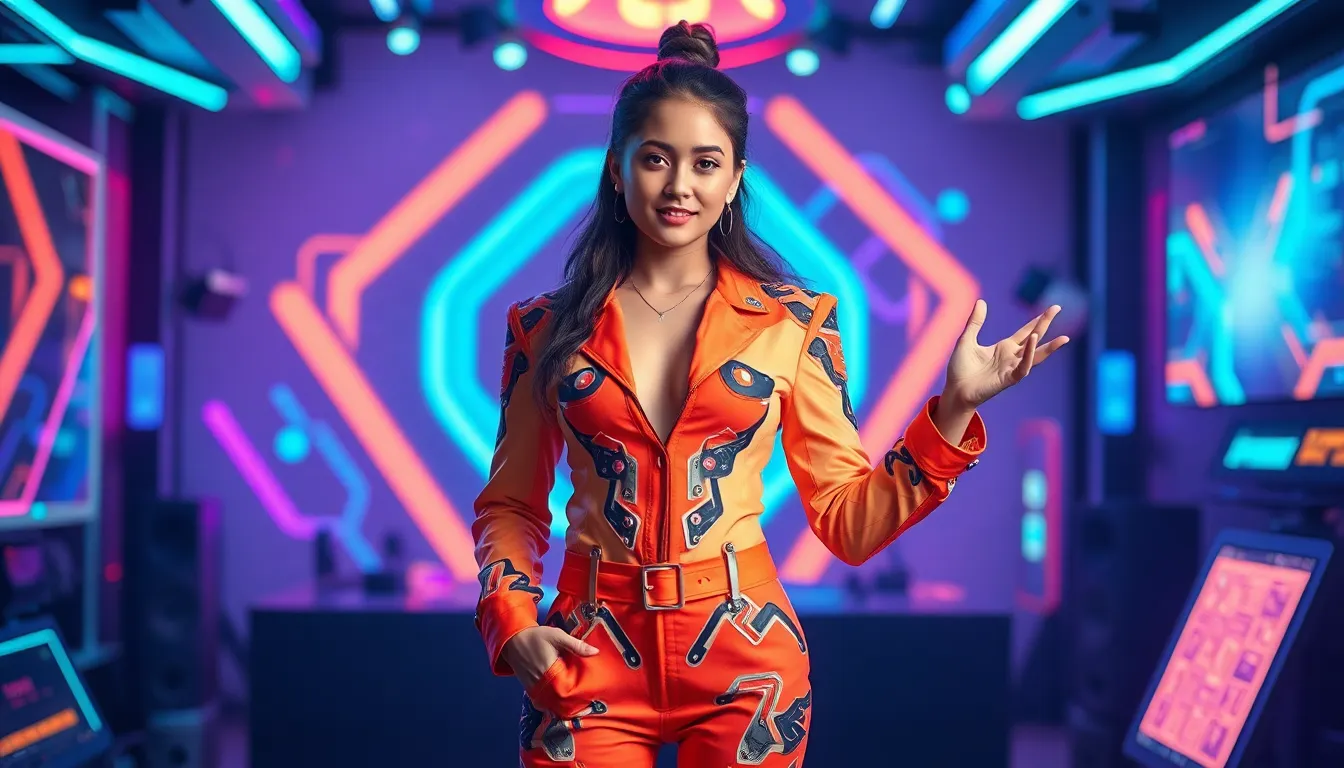In a world where sweatpants have become the unofficial uniform of the pandemic, digital fashion trends are shaking things up like a well-mixed cocktail. Gone are the days when clothing existed solely in the physical realm. Now, avatars strut their stuff in virtual runways, and digital wardrobes are as essential as that pair of jeans you’ve worn for way too long.
Table of Contents
ToggleOverview of Digital Fashion Trends
Digital fashion trends reflect a significant transformation within the industry. Virtual clothing transcends traditional styles, offering innovative designs that enhance digital identities. Avatars now sport high-fashion looks, attracting a global audience keen on virtual expression.
The 3D rendering of garments allows designers to create intricate details not possible in physical clothing. Multiple platforms showcase these digital garments, promoting online interactions through social media and virtual environments. Many brands leverage augmented reality to enable consumers to try on clothing virtually before purchase.
Color palettes and textile simulations in digital fashion push creative boundaries. Popularity in digital wearables has increased demand for unique, sustainable designs accessible to diverse consumers. High-profile collaborations between fashion houses and tech companies have paved the way for new market avenues.
Market statistics indicate that digital fashion sales could surpass $200 billion by 2030. As online shopping continues to grow, the integration of digital wardrobes becomes essential. In gaming environments and virtual realities, digital garments become status symbols, enhancing user engagement and community building.
Innovations in blockchain technology appear within this space, ensuring authenticity and ownership of digital assets. Many forward-thinking brands also adopt NFTs as a method of creating exclusive virtual clothing collections. The interplay between physical and digital fashion fosters an environment where creativity thrives alongside technology.
With advancements in VR and AR, the future of fashion undoubtedly embraces further digital integration, allowing consumers to curate wardrobes that reflect personal styles while challenging traditional fashion norms.
Impact of Technology on Fashion

Technology reshapes the fashion landscape, enhancing creativity and consumer engagement. Virtual reality and augmented reality play critical roles in this transformation.
Virtual Reality and Augmented Reality
Virtual reality (VR) and augmented reality (AR) elevate shopping experiences by allowing users to interact with digital clothing in immersive environments. Using AR, brands provide virtual try-on features that assist consumers in visualizing how garments fit in real time. Some platforms enable avatars to walk down virtual runways, showcasing high-fashion looks tailored for digital spaces. Gamers also benefit, as VR experiences make wearing exclusive digital garments a status symbol. The integration of these technologies enhances social interactions and increases brand loyalty, making them essential tools in modern fashion strategies.
Blockchain and NFTs in Fashion
Blockchain technology ensures authenticity and traceability of digital fashion items. Many fashion brands now utilize NFTs to create unique virtual collections, allowing consumers to own exclusive pieces that hold value. This innovation also combats counterfeiting, providing a secure ownership transfer process. Consumers gain confidence in their digital purchases, knowing that the item is verifiable. High-profile collaborations between luxury brands and tech companies further highlight the growing presence of NFTs in the fashion industry. As digital assets gain popularity, blockchain technology fosters new revenue streams, driving the evolution of fashion into the digital realm.
Key Digital Fashion Trends
Digital fashion trends are rapidly evolving, showcasing innovative approaches that blend technology with style. Noteworthy aspects include sustainability, personalization, and virtual experiences.
Sustainable Fashion Initiatives
Sustainable fashion initiatives gain traction as brands prioritize eco-friendly practices. These initiatives often feature digital garments made from sustainable materials, appealing to eco-conscious consumers. Digital collaborations between fashion houses and tech innovators also foster sustainability. By creating virtual collections, brands reduce waste generated by traditional production processes. Unique platforms collect and sell digital fashion, further promoting sustainable choices. Statistics reveal that 64% of consumers prefer sustainable brands, reflecting a demand for responsible fashion.
Personalization and Customization
Personalization and customization emerge as significant trends in digital fashion. Brands enable users to customize garments to match individual styles, fostering connections between consumers and products. Digital wardrobes encourage personal expression through unique designs tailored for specific avatars. Various platforms offer tools for virtual fitting; these enhance user experiences while providing a sense of ownership. Case studies highlight that personalized shopping experiences can increase customer loyalty by 50%. This emphasis on uniqueness propels the growth of the digital fashion market.
Virtual Fashion Shows
Virtual fashion shows transform the traditional runway experience. Designers utilize immersive technologies to showcase collections to global audiences without physical limitations. These events allow brands to reach wider demographics, resulting in increased engagement. Creativity flourishes as digital models wear intricate designs only possible in virtual formats. Statistics indicate that 79% of consumers feel excited about experiencing fashion through virtual events. Additionally, brands leverage social media during these shows for real-time interactions and audience participation, enhancing community building.
The Role of Social Media
Social media plays a critical role in shaping digital fashion trends. It acts as a hub for influencers, brands, and consumers to interact and showcase creativity.
Influencer Marketing in Fashion
Influencer marketing significantly impacts brand visibility within the digital fashion landscape. Through platforms like Instagram and TikTok, influencers promote virtual clothing and drive trends. Many influencers partner with digital fashion brands, showcasing unique outfits that captivate their audiences. Engagement rates soar when followers see their favorite personalities donning innovative digital designs. Brands increasingly rely on these collaborations to reach targeted demographics and enhance their market presence. According to recent data, digital fashion sales are projected to exceed $200 billion by 2030, highlighting the effectiveness of influencer-driven strategies.
Community Engagement and User-Generated Content
Community engagement thrives on social media as users generate content and share their virtual fashion experiences. People enthusiastically post photos and videos of themselves styled in digital garments, creating organic promotion for brands. User-generated content fosters a sense of belonging, sparking interactions among like-minded fashion enthusiasts. Various platforms encourage this sharing culture, enhancing brand loyalty and community building. As brands observe their followers participating in online conversations, they adjust marketing strategies to resonate with consumer preferences. A robust community leads to increased interest in sustainable fashion, demonstrating the power of collective influence in digital spaces.
The landscape of fashion is undergoing a remarkable transformation as digital trends continue to rise. Virtual clothing and innovative designs are reshaping how individuals express their identities online. With the integration of augmented reality and blockchain technology, consumers now enjoy immersive shopping experiences while ensuring authenticity and ownership of their digital assets.
As sustainability and personalization take center stage, brands are adapting to meet the evolving demands of eco-conscious consumers. The influence of social media remains pivotal in driving these trends, fostering community engagement and brand loyalty. The future of fashion is undeniably digital, promising exciting opportunities for creativity and connection in a virtual world.








